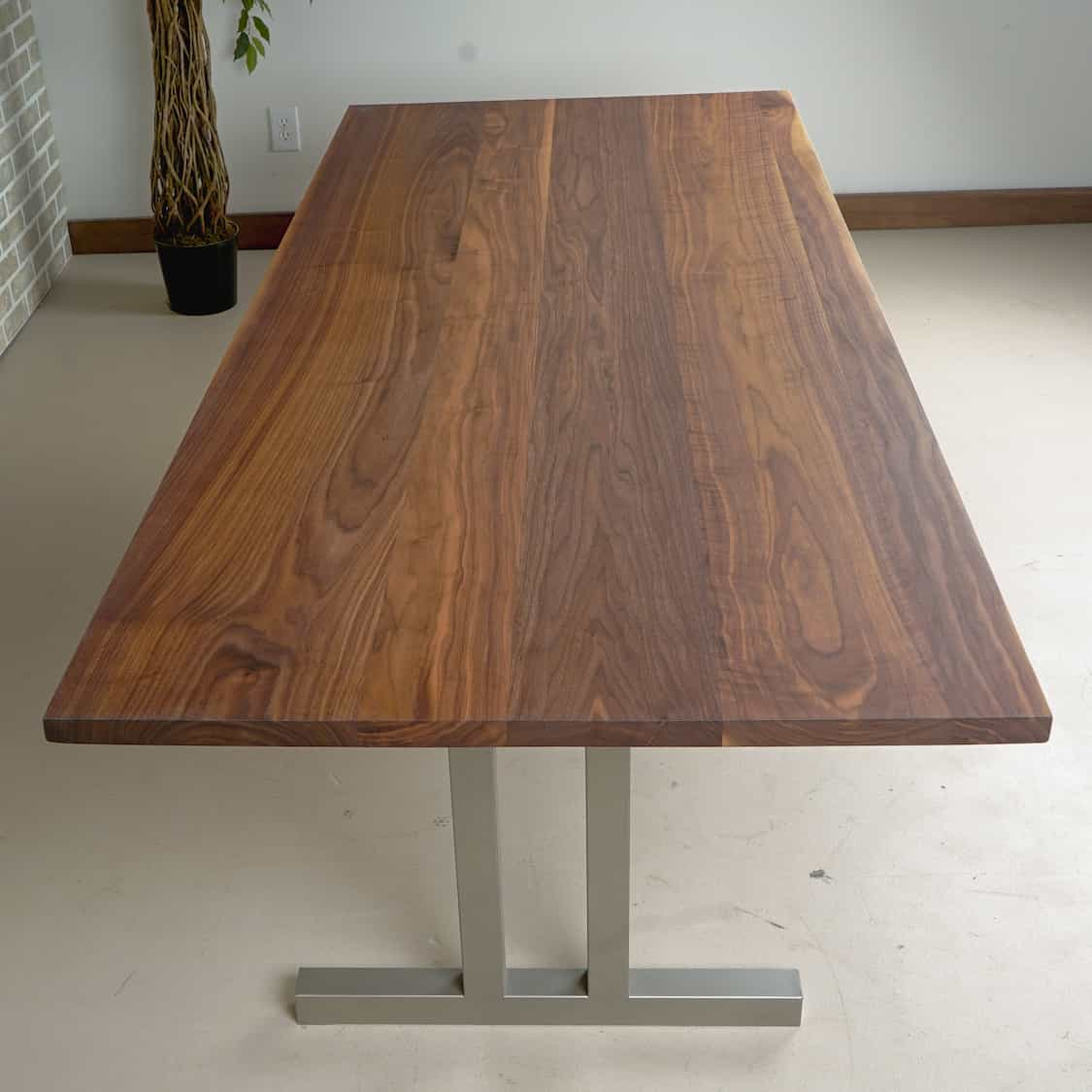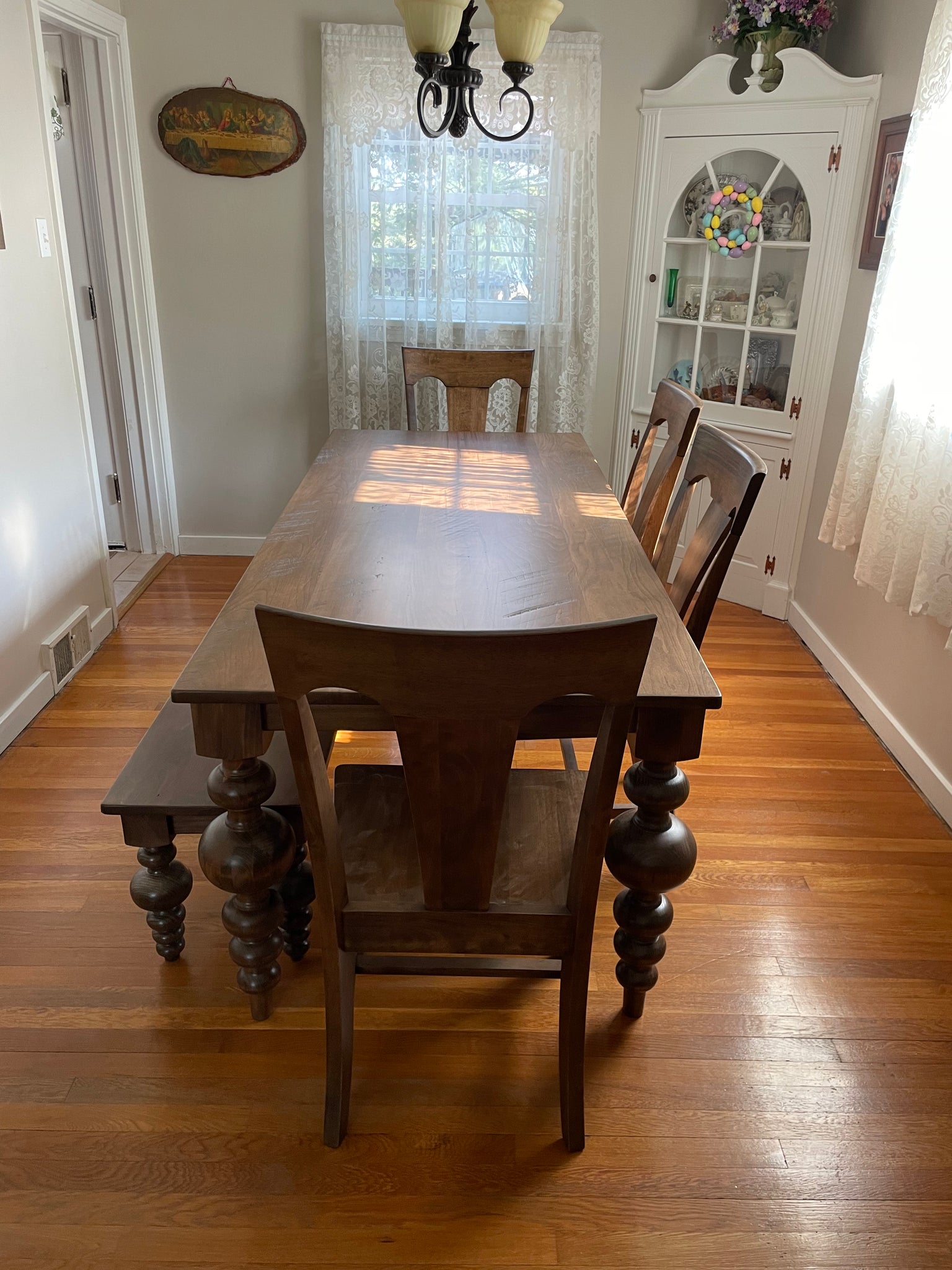Discovering the Various Kinds Of Table Legs Timber for Your Eating Room
The option of eating table legs wood can exceptionally affect both the aesthetic and practical high qualities of your eating room. Solid timber choices, such as oak and walnut, offer a classic appearance with unrivaled durability, while engineered timber choices offer cutting-edge styles that mimic the splendor of all-natural grains. In addition, the growing pattern of recovered timber presents a sustainable element that attract environmentally aware consumers. As we discover these numerous choices, it ends up being necessary to think about not just the visual charm but likewise the sensible ramifications of each product selection. What variables should guide your choice?
Strong Timber Options

Furthermore, strong wood is renowned for its stamina and long life. Unlike crafted products, solid wood is less prone to bending and damages gradually when properly maintained. This makes it a suitable selection for families or those who frequently host events. Each item of strong wood is special, showcasing individual characteristics that contribute to the appeal and character of the table.
In addition, strong wood can be finished in numerous methods, varying from natural oils to stained surfaces, enabling house owners to individualize their furniture to match their design. In summary, selecting solid wood for eating table legs not only guarantees structural integrity yet likewise improves the visual allure of the eating location, making it a worthwhile investment for any kind of home.
Engineered Timber Alternatives

Plywood, created from numerous layers of timber veneer, is specifically solid and steady, making it an exceptional option for eating table legs. Its layered structure enables it to endure adjustments in humidity and temperature level much better than conventional strong wood. MDF, on the various other hand, provides a smooth surface area for painting or veneering, allowing designers to accomplish a sleek look while preserving architectural stability.
Particleboard, frequently made use of in economical choices, provides decent stamina and is lightweight, making it much easier to take care of. Nonetheless, it may not be as sturdy as plywood or MDF. It is necessary to think about the desired use and preferred aesthetic when choosing crafted timber choices. These products not just enhance the functionality of eating rooms but also enable better design flexibility, making certain that standard and modern styles can coexist harmoniously.
Reclaimed Wood Features
Recovered wood provides a distinct blend of sustainability and character, making it a progressively prominent option for dining table legs. Sourced from old barns, factories, and various other frameworks, redeemed timber symbolizes a history that new products merely can not more tips here reproduce. Each item lugs its very own story, marked by distinct blemishes, knots, and differing grain patterns, which add to a table's unique visual allure.
Along with its aesthetic beauty, recovered wood is an ecologically friendly option. By repurposing formerly Read More Here utilized materials, it reduces the need for brand-new lumber, therefore helping to lessen and save forests waste. This aligns with an expanding customer choice for sustainable practices in home furnishings.
Additionally, reclaimed timber is usually extra long lasting than newly collected timber because of its age. The natural drying out procedure that recovered timber undergoes cause a denser and more powerful material, making it much less susceptible to warping and splitting. This enhances the durability of eating tables, allowing them to hold up against the rigors of day-to-day usage.
Softwood vs. Hardwood
When selecting eating table legs, comprehending the distinctions between softwood and wood is important for achieving both useful and visual goals. Softwoods, stemmed from coniferous trees, such as yearn and cedar, are identified by their lighter weight and simplicity of adjustment. They normally exhibit an even more rustic look, making them suitable for casual or country-style dining rooms. Softwoods are typically much less durable than woods, which can be a factor to consider for families or those seeking long life in their furnishings.
On the other hand, hardwoods, sourced from deciduous trees like oak, maple, and cherry, are renowned for their density, toughness, and durability. The detailed grain patterns and rich shades of woods give a advanced and classic allure, making them ideal for official dining settings. While hardwoods have a tendency to be much more expensive and heavier, their strength against wear and tear typically validates the investment.
Ultimately, the choice between softwood and wood for eating table legs ought to straighten with your layout vision, use requirements, and spending plan, making certain that your eating space shows your personal design while staying go to this site practical gradually.

Coatings and Treatments
The aesthetic appeal and longevity of table legs can be considerably improved with various surfaces and therapies. These processes not only safeguard the wood from damages yet likewise boost its look, permitting it to enhance varied indoor styles.
One common therapy is discoloring, which permeates the wood and enhances its natural grain while adding shade. Discolorations give an abundant, sophisticated look, allowing homeowners to match their furnishings with existing decoration. Conversely, clear finishes such as polyurethane or varnish develop a safety layer without changing the timber's original tone, making certain durability versus deterioration.
Additionally, natural oils, like tung or linseed oil, nourish the timber and use a subtle shine, all while being green. These oils enable the surface to breathe, stopping wetness build-up and possible warping.
For those looking for a rustic appeal, troubled or weathered surfaces can be applied to create an aged appearance, including character to the item. Ultimately, the option of finishes and therapies relies on individual preference, desired aesthetic appeals, and the details wood kind, making it essential to consider these aspects when picking eating table legs for your space.
Verdict
In verdict, the option of table leg products dramatically affects both the practical and visual elements of an eating room. Solid timbers, crafted choices, and reclaimed alternatives each deal distinctive advantages, satisfying different preferences and needs. Comprehending the distinctions between softwoods and woods, together with ideal finishes and treatments, permits informed decision-making. Eventually, the choice of timber type need to align with desired design, longevity, and ecological considerations, improving the overall eating experience.
The option of eating table legs timber can profoundly influence both the useful and aesthetic qualities of your eating area - Dining Table Legs Wood. Solid timber options, such as oak and walnut, offer a timeless appearance with unequaled sturdiness, while crafted wood alternatives supply cutting-edge styles that imitate the richness of natural grains. Solid wood uses a classic top quality that can elevate the total design of a dining room. Each piece of strong wood is distinct, showcasing private attributes that include to the appeal and personality of the dining table
Moreover, reclaimed timber is frequently extra sturdy than recently collected timber due to its age.
Comments on “Personalize Your Table with One-of-a-kind Dining Table Legs Wood Creations”